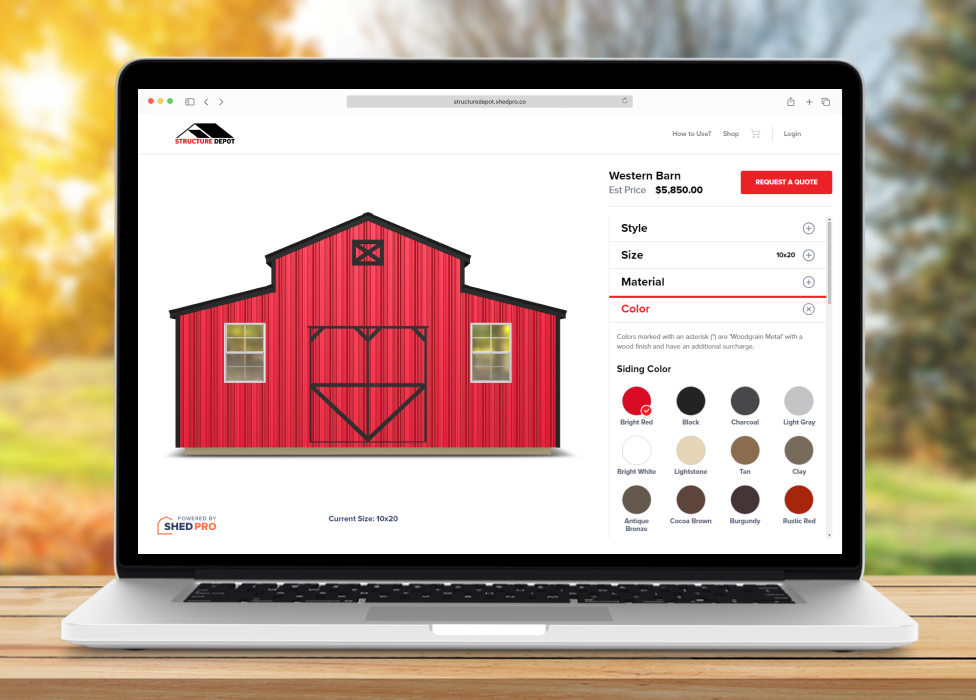Site Prep & Delivery
Site Preparation for Your Shed Delivery
Proper site preparation is essential to ensure a smooth and successful delivery of your shed. This involves understanding local regulations, obtaining necessary permits, and preparing a suitable location for your new structure.
Frequently Asked Questions (FAQs) Before Shed Delivery
Whether a permit is needed or not depends solely on the size of the building and the location where the building will be placed. Although most buildings under 120 square feet do not require a building permit, the only way to know for sure is to contact your City or Township to learn if there are regulations that apply to portable structures in your area. A site plan or building permit may be required. If you live in a community with covenants on what type or style of building, you can have be sure to find out what you need to do to comply. It is your responsibility to obtain any required permits and comply with your local regulations including building size and property line setbacks.
It is very important that you have a level site prior to delivery. It should be free from low-hanging branches. You should avoid an area that is very wet or suffers from poor drainage. Be aware of any property line setback zoning requirements. If your site is more than 6” from being level, blocking can be placed under one end to bring it to level. See paver foundations below. Note: The delivery driver does not perform any site prep other than placing customer provided pavers or blocks under the building to level it. If the site is not prepared and level upon delivery, there will be an additional charge to redeliver.
In order to avoid damage to the building or extra delivery charges, it is important to make sure the path to the site is clear and accessible prior to delivery.
The path needs to be 2’ wider and 2’ taller than the building. Most buildings are 10’6” Tall
Any branches in the way need to be cut back. Fence post or any other obstructions need to be removed prior to delivery. If you are not able to be there, make sure the site is clearly marked for the delivery team.
Our delivery crew uses a machine called a Mule. This machine can pick up one end of the shed and drag it on the shed’s runners. Dolly wheels can be placed under one end as well so that it can be wheeled into place. Our goal is to minimize any damage to the grass while delivering. We are not responsible for any damage to the yard or grass during the delivery process.

We recommend some kind of base. By raising the runners of the building off the ground and away from moisture your building will last much longer.
- Concrete Pavers – Most Economical & Easy: For level ground with firm soil and good drainage, consider placing your building on pavers. This elevates the wood runners, preventing rot.
- Use 8″x16″x2″ or 12″x12″x2″ pavers, placing one every 4 feet along each runner (most buildings have 4). For example, a 10×20 building needs 20 pavers. More pavers will be needed if the ground is not level. Make sure you have extra pavers.


- Ensure pavers are on-site before delivery and out of the building’s path. The driver will position them after placement.
- Alternatively, sheds can be placed on 8x8x16 concrete blocks up to a maximum height of 16″ (2 blocks).
- Crushed Limestone: For optimal building support, we recommend the following:
- Remove sod and create a 4-6 inch deep base of well-packed crushed limestone.
- Avoid pea gravel and opt for #53 or standard driveway stone with lime dust for best results and cost-effectiveness.
- Extend the base 2 feet beyond the building dimensions in all directions. Level meticulously using a 6-foot level and a long board or 2×4, checking front-to-back, side-to-side, and diagonally.
- While compaction is beneficial, it’s not strictly necessary.
- Consider hiring a professional with a dump truck and skid steer for efficient site preparation.
- Concrete Slab: For the strongest and most durable foundation, consider a concrete slab.
- It prevents shifting and settling, ideal for larger sheds or those storing heavy equipment.
- Concrete’s waterproof nature is particularly beneficial in areas with moisture-prone soil.

Need a Shed Fast?
Choose from over 200 sheds in stock and ready for delivery.
We can deliver as early as next week, sometimes sooner. Allow 1-2 weeks.
Order online or call us now. 614-686-6505
Call for an Estimate or Consultation